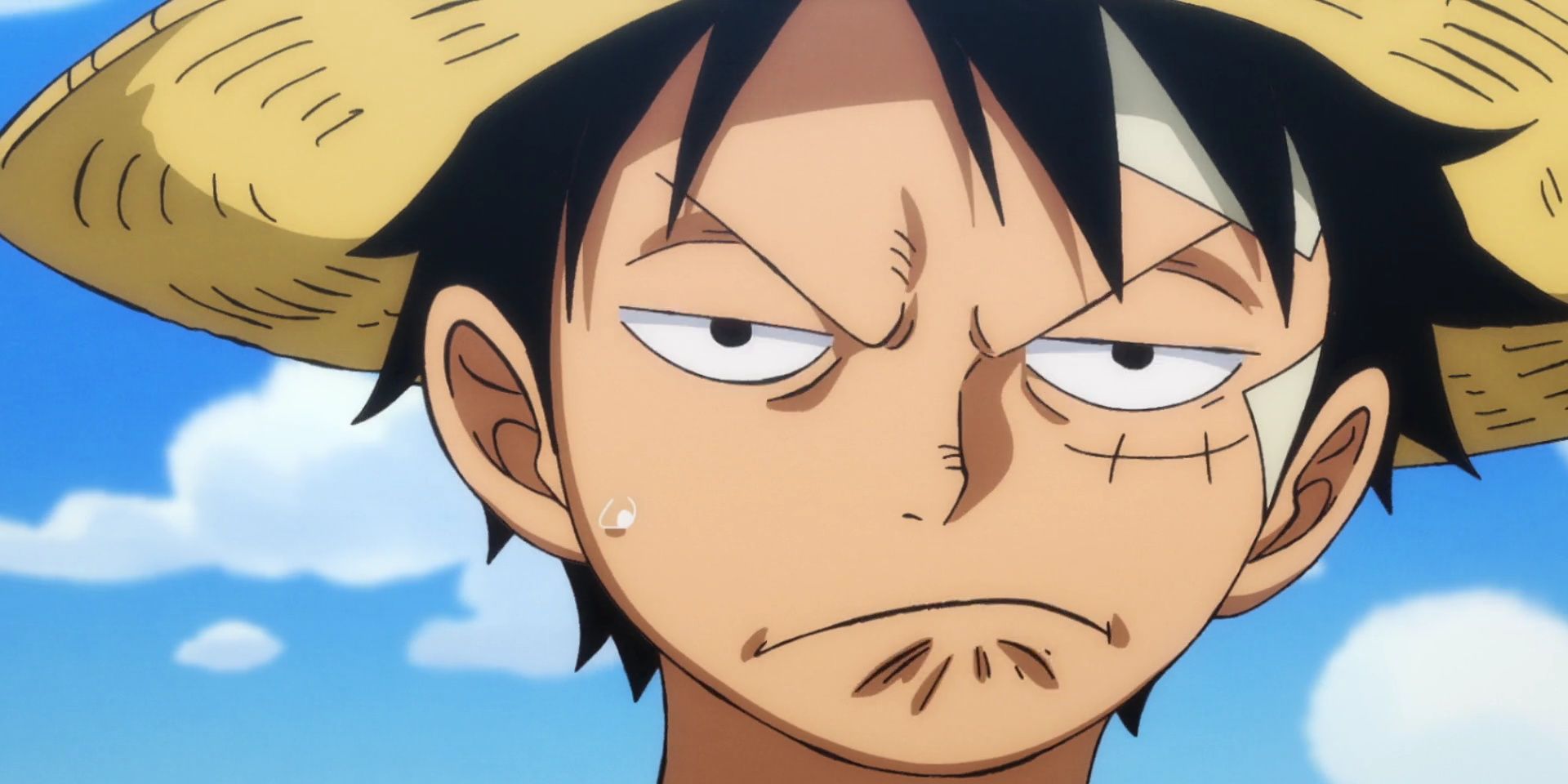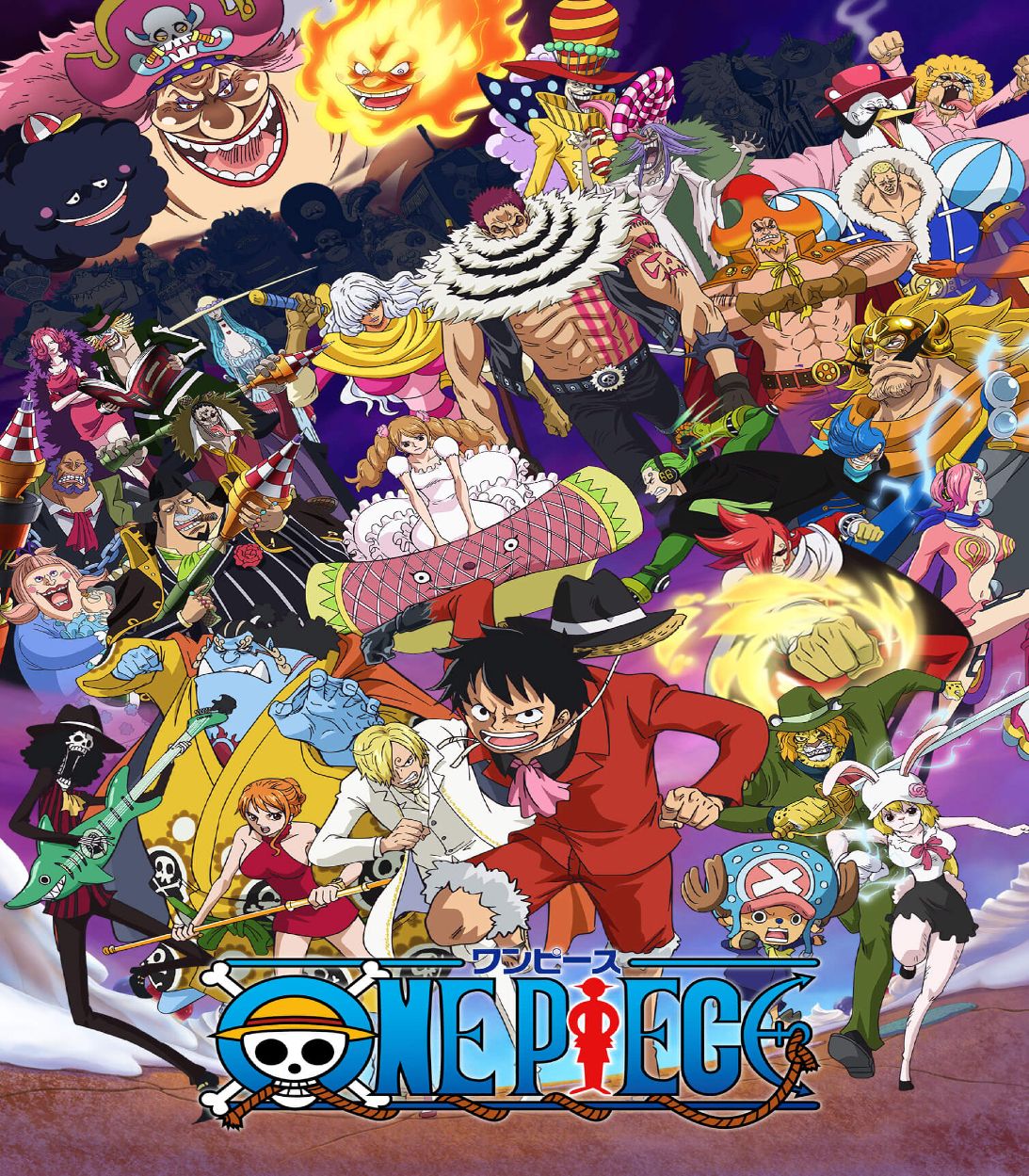For 27 years and counting, the story of One Piece has delighted shonen fans around the globe. Even after all this time, author Eiichiro Oda is still delighting and stunning fans with his boundless creativity and bold ideas for this shonen pirate adventure. This is a story that only gets better over many years, and Mr. Oda still has plenty of tricks up his sleeve, the most recent one being Gear 5 – arguably the best shonen transformation in history.
Monkey D. Luffy's awakening of Gear 5 during his fight with Kaido at Onigashima was a game-changer on many levels, both for Mr. Oda and for One Piece's legion of fans. It was not just a convenient contrivance to bail Luffy out of a losing fight against the world's strongest creature -- it marked the end of an era in One Piece and the start of another, both for Luffy and the overall story. The awakening of Luffy's Gum-Gum Fruit as the embodiment of Nika the sun god will no doubt have a huge impact on One Piece's plot, as well as its combat system and tone as the Final Saga unfolds.
Gear 5 Gives Luffy His First External Destiny
Luffy's awakening of Gear 5 is a game-changer for both him and the story on several levels, especially thematically. Monkey D. Luffy doesn't just sail on the high seas to enable countless action scenes and explore a rich variety of islands with One Piece's stellar worldbuilding. One of Luffy's most valued and personal themes is simple liberty, his freedom to create any kind of life he wishes without any tyrant or boss to control him. Some pirates scheme to rule nations or command an entire armada, but not Monkey D. Luffy. He is a true ESTP, a free spirit who thinks on the short term and favors practical solutions over complex theories or sentimentality. "Live free or die" may as well be Luffy's motto when all is said and done. He fights to preserve his own freedom and liberate oppressed people from the likes of Enel, Donquixote Doflamingo, and Kaido.
That theme changed somewhat when Luffy obtained the astonishing power of Gear 5. Until that point, Luffy used his own two hands to create and defend his own freedom – like with his first few Gears – but Gear 5 isn't something he trained to get, nor did he seek it out. For the first time, Luffy embraced an external power and with it, an external destiny. Overall, the One Piece anime seems to avoid the "child of destiny" trope and shows its Straw Hat heroes deciding for themselves what their future will be like. Luffy embodied that theme well, but it turns out his Gum-Gum Fruit was the seed of Nika, the sun god of liberation, and it's not just about Devil Fruit power, either. Nika is a symbol of freedom and hope, and a variety of characters like Zunesha the elephant island, and even the Iron Giant, have been looking forward to Nika/Joy Boy's return. Now, Luffy has partially assumed someone else's identity.
That's a personal game changer for Luffy, who has never been a child of destiny. In theory, he could reject his symbolic status as Joy Boy and use Gear 5 for his own selfish purposes. But like it or not, Luffy will probably use Gear 5 and its symbolic power to free the entire world from the World Government's oppressive ways, allowing him to fulfill the "prophecy" that Joy Boy would return and free everyone with the Drums of Liberation. Luffy has already been doing this on various islands, but now it's official, anad there's no going back. All the oppressed people now look up to him as the reincated Nika/Joy Boy who is destined to free the world. Since Luffy can personally relate to that, there's little doubt that he will fulfill those hopes.
In a way, that may sound like a contradiction with Luffy's personal theme of freedom, but paradoxically, embracing his new role as Nika/Joy Boy makes him freer than ever. That's because Luffy has broken the combat system based on Haki and Devil Fruits, using his unqiue "toon force" to fight foes like Kaido and the terrifying Admiral Kizaru in whatever whimsical way he can think up. Luffy is free to make it up as he goes and fight anyone on his own Looney Tunes terms, creating an odd blend of restrictive destiny vs total freedom in battle. It may seem like a contradiction, but it does vibe reasonably well with Luffy's personal convictions and One Piece's plot needs, at least.
Luffy's Nika Transformation Changes the Game For One Piece's Tone

On a narrative level, Gear 5 is a game-changer for how One Piece presents its story and how Eiichiro Oda writes the manga. Of course, no anime fan is obliged to love Gear 5 or what it represents, and Gear 5's fan reactions were hardly 100% positive. Still, plenty of fans do agree that Gear 5's transformation isn't just powerful or memorable as a take on shonen Looney Tunes -- it also enhances One Piece's tone, which is evidently no accident. From the beginning, One Piece has been comfortable playing out as a fairly cartoony manga/anime franchise. This can be seen in its drawing/animation style to its comedy and overall character designs.
It's worth noting that One Piece did adopt a darker and more brutal tone, from its themes of racism and slavery to the horror of a Buster Call and the nightmarish plot twists & themes featured in the Dressrosa and Wano sagas. It seemed as if One Piece was "growing up" with its audience, indulging in more mature and extremely story beats. Ultimately, though, One Piece is meant to be cheerful and fun, no matter its dark themes or brutal plot twists, and Gear 5 helps restore the balance that may have been lost otherwise. Fans might say that the Wano saga was getting a little too dark and serious by this series' own standards at times, but that didn't last once Gear 5 arrived on the scene. Just as Luffy was becoming too tense anad grim as the series' main character, he broke free of his misery and stress to become the bouncy, carefree Joy Boy with Gear 5. That shift in tone no doubt added to the joyful excitement surrounding Gear 5's now legendary debut. There's no doubt that will continue right to the very end.
Besides, Mr. Oda himself said that he designed the Gum-Gum Fruit in such a way that Luffy would always be a silly and fun protagonist no matter what, keeping the story grounded as a comedic, carefree adventure where nothing should be taken too seriously. In light of that, Gear 5 is a return to form for both Luffy and One Piece, and is the natural next step in the evolution of his powers. In that sense, Gear 5 is both a game-changer and a reversion to what the story always was, which may sound contradictory but works well in the scope of One Piece's ever-changing narrative. Most of all, Mr. Oda himself said that he just wanted to "have fun" and write One Piece's final saga on his own terms, enjoying it with the full extent of his vibrant, wacky imagination. Fans are invited to come along for the ride, and embracing Gear 5's tone shift from serious to silly is the best ticket to do so.
Gear 5 Sets Luffy Apart From Other Shonen Protagonist Transformations
Monkey D. Luffy is far from unique just by virtue of having transformations as a shonen hero, as seen with his various Gears throughout One Piece. The real difference between Luffy and other anime main characters is that while most transformations make the hero more serious, Luffy's transformation into Gear 5 made him less serious in many ways – and that's what makes Gear 5 a game-changer on a meta level. Typically, shonen heroes become not just stronger, but also cooler and even scarier when they assume a new form. All this is done to impress fans and show how imposing that new transformation is. Such transformations tend to match a given anime's trend of becoming more serious and intense as the narrative carries on. The hero loses their innocence and fear as they assume new forms, becoming an iconic hero with new raw power at their disposal.
Luffy, however, flips the script on its heads. Admitedlly, he did follow that trend early on in One Piece, going from a silly rubber hero in the East Blue saga to becoming the ultra-tough and cool Snakeman who fought in the New World. Then, just when One Piece was on the verge of abandoning its fun vibes, Luffy returned to the carefree cartoon days with Gear 5, almost like an East Blue 2.0. Hardly any other shonen anime would involve such a tonal reversal with their heroes' new forms, but One Piece made it feel so easy and natural. It's a testament to the series' sheer quality of writing.
This contrasts Luffy quite sharply with the iconic and fairly serious Super Saiyan form that Son Goku obtained in Dragon Ball Z, along with Naruto Uzumaki's fancier and cool forms later in Naruto Shippuden. Gear 5 also contrasts well with scary half-other protagonist modes like Eren Yeager's deadly Attack Titan form or Ichigo Kurosaki's nightmarish Vasto Lorde form. Sometimes, strength is more memorable when it's silly, not serious, and that's a game-changing idea that other creators might consider in the future. Most importantly, Gear 5 is a form that's distinctly One Piece. In an age where most anime parrot each other and play the hits, Gear 5 Luffy is a far cry from Super Saiyan Goku and his many successors. It's a game-changer that speaks to One Piece's creativty and unique identity – and the series is all the better for it.


